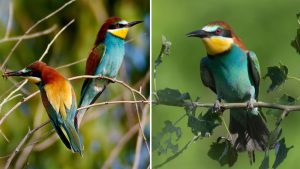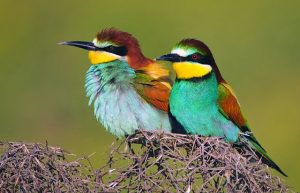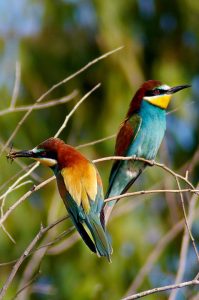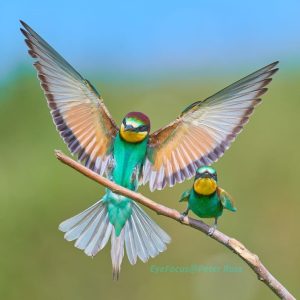Meet the Spectacularly Colorful European Bee-Eater: A Vibrant Jewel of European Birdlife
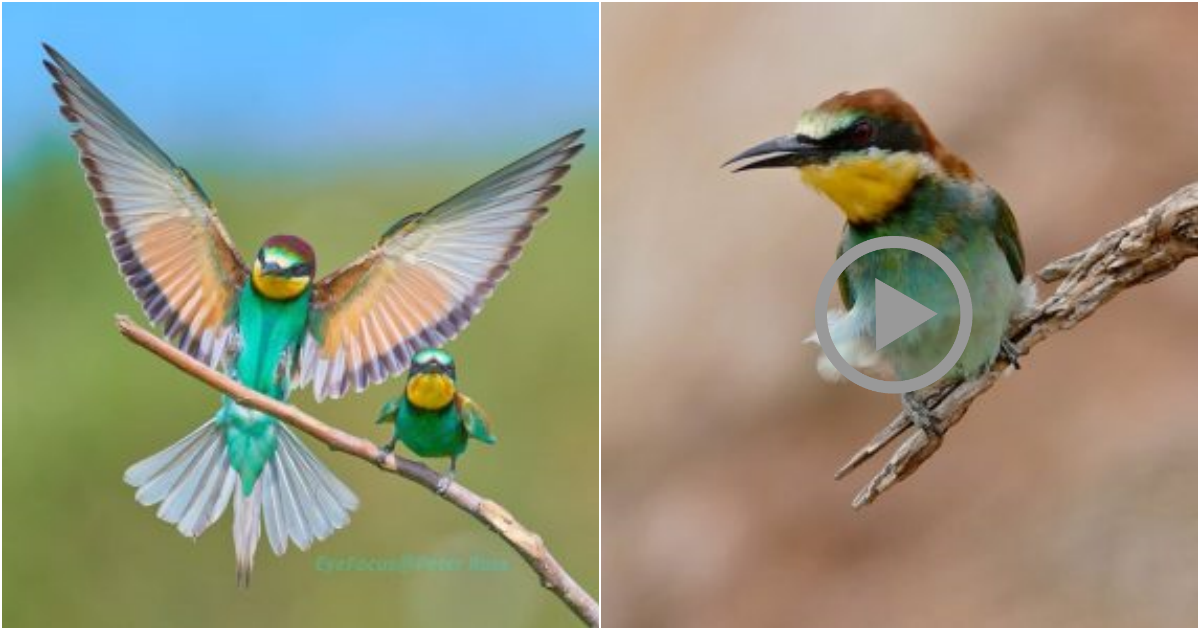
The European bee-eater (Merops apiaster) is indeed a spectacularly colorful bird, known for its vibrant plumage. During the breeding season, the male European bee-eater displays a stunning combination of colors. Its head is adorned with a brown cap and a bright yellow forehead. A black eye band starts from the base of the bill and extends below the eye to the nape of the neck. Below the bill, there is a patch of bright yellow bordered by a black band. The rest of the body is green-blue, extending down to the tail. The tail itself has a unique central spike caused by two elongated feathers, which are more visible during flight.
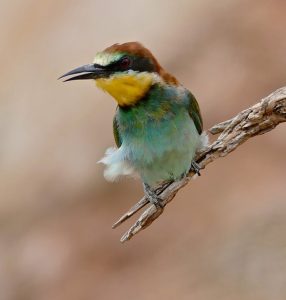
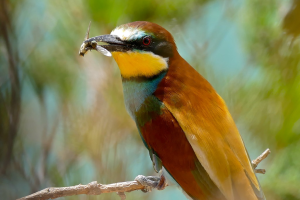 European bee-eaters breed in various regions, including southern and central Europe, northern and southern Africa, and parts of Asia. With the exception of a resident population in South Africa, they migrate to tropical Africa to spend the winter. These birds are often found in river valleys, cultivated areas with trees, pastures, plains, and semi-desert areas with shrubs.
European bee-eaters breed in various regions, including southern and central Europe, northern and southern Africa, and parts of Asia. With the exception of a resident population in South Africa, they migrate to tropical Africa to spend the winter. These birds are often found in river valleys, cultivated areas with trees, pastures, plains, and semi-desert areas with shrubs.  Their preferred method of obtaining food is by catching insects on the wing. European bee-eaters primarily feed on bees, but they also consume wasps, locusts, and dragonflies.
Their preferred method of obtaining food is by catching insects on the wing. European bee-eaters primarily feed on bees, but they also consume wasps, locusts, and dragonflies. 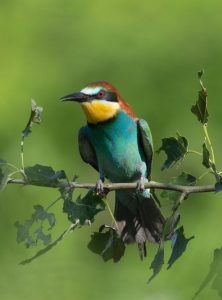 During the breeding season, European bee-eaters create nests by burrowing into sandy banks or cliff-top soil. They typically nest with their lifelong partners, occasionally with the assistance of earlier offspring. Female bee-eaters lay around 4 to 6 eggs between April and July in the northern hemisphere or between October and November in South Africa. Both parents take turns incubating the eggs for up to 20 days, with the female taking the night shift. The hatchlings fledge approximately one month after hatching.
During the breeding season, European bee-eaters create nests by burrowing into sandy banks or cliff-top soil. They typically nest with their lifelong partners, occasionally with the assistance of earlier offspring. Female bee-eaters lay around 4 to 6 eggs between April and July in the northern hemisphere or between October and November in South Africa. Both parents take turns incubating the eggs for up to 20 days, with the female taking the night shift. The hatchlings fledge approximately one month after hatching. 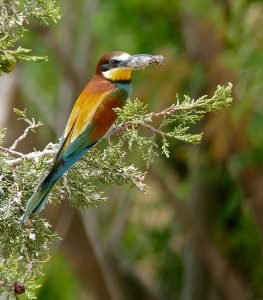 Although they may be hunted as pests in some areas, the European bee-eater is currently listed as “Least Concern” on the IUCN Red List, indicating that it is not at significant risk of extinction.
Although they may be hunted as pests in some areas, the European bee-eater is currently listed as “Least Concern” on the IUCN Red List, indicating that it is not at significant risk of extinction. 